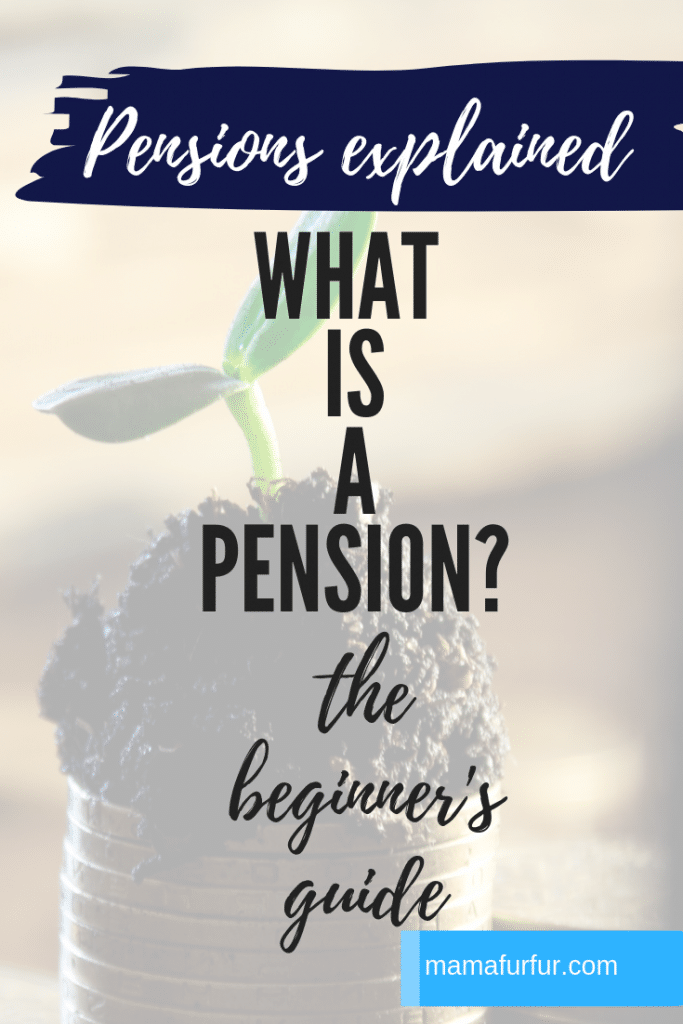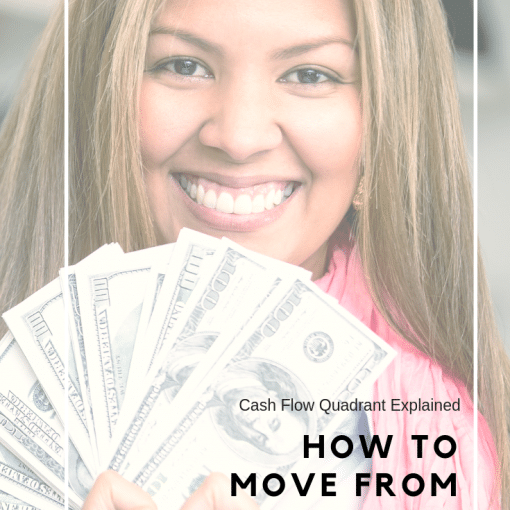 Pensions in the UK seem to be the one topic that you either are passionate about, or pretend to ignore and put your head in the sand believing that the “Government State Pension” will allow you to live life comfortable in those far away years to come.
Pensions in the UK seem to be the one topic that you either are passionate about, or pretend to ignore and put your head in the sand believing that the “Government State Pension” will allow you to live life comfortable in those far away years to come.
One of my missions for this blog and my work is to help others create total financial freedom and security on their own, without relying on contributions from other sources, so that we can ensure that FEARLESS knowledge and mindset that we have everything as secure as we can make it should life change or we want to create it slightly differently.
That means we learn how to effectively use money as a tool to create wealth sooner than we think, and dare I say it – even retire from our day jobs if we create a plan and keep committed to the process whilst also allowing for life to naturally take its course.
When we are young, it is easy to dismiss pensions or financial freedom savings as being boring, and not relevant – but I’m here to show you WHY this particular portion of your money towards your future life is the most critical skill you can learn from as young an age as possible.
** DISCLAIMER – any advice on my blog or youtube channel is for information purposes only and is not to be taken as financial advice for your situation. My advice is based on my own knowledge, understanding, goals and preferences for risk and therefore not unique to every individual. If you seek to invest in a pension or investments in general, please ensure you understand that investments can go up and down and therefore there are no guarenteed outcomes for your money. If in any doubt, before making any financial decisions for your future, seek out a financial advisor. My hope is that you can learn the tools and skills so you are confident in your choices too. **
How do Pensions work?
A pension is a financial product where you save money regularly or place lump sums so that eventually the total amount over time will allow you to draw a “wage” for your living expenses when you choose not to work any more. Currently in the UK, the age you can start to take monthly income from your pension is as young as 55 years.
The money saved into the pension is invested, which some people have no clue about surprising, typically into funds that hold shares or bonds, and grows over the years to deliver a retirement pot.
Most people will have a pension through their workplace as there are tax benefits associated with a pension contribution made every year from your salary.
Typically, it is your responsibility to select how much of your salary you wish to place into your pension (before tax) every month HOWEVER the current Government laws have changed that this must be a minimum of 8%.
The Government will give you tax relief on any money placed into a pension, so effectively you are drawing it straight from your Gross salary rather than net in your pocket with everyone getting 20% on top of your contributions automatically as a minimum.
Higher tax bracket payers can then claim up to 40% relief for higher earnings.
- If you are a basic rate taxpayer, for every £100 you save into pension, the Government adds £25 in tax relief, making a total of £125.
- If you are a higher rate taxpayer, for every £100 you save, £67 is added, making a total of £167.
Currently the limit is £40k for pension contributions per person for tax relief purposes, and a lifetime limit on the total pension pot of £1million.
If you go above these values, you will face large tax charges making a pension financially not the best place for your money.
If your employer offers matched contributions or better, TAKE THAT MONEY AND GET THAT FREE PAY RISE!
Most employers will also give you matched or BETTER contributions on your pension payments as they receive benefits as a business for placing money into this scheme rather than giving it as a wage.
If your company holds a private pension, and makes contributions in some way – PLEASE TAKE AS MUCH OF THAT MONEY AND SMILE!
Any form of contributions to your pension are FREE MONEY on top of your wages that you are not having to earn, and therefore all adding up to a more financial secure future for you.
This is the one piece of advice that will allow you to build up your pension and retirement pot far quickly than your own contributions, and allow with many years of compounding interest the pot to grow to a good amount.
What are our investment choices with a Workplace pension?
Right now, you should be automatically enrolled into a pension plan through your employer for 8% of your wage, unless you say you wish to be opted out.
Your workplace will usually have selected a Pension provider company for you, and give you a few basic fund choices to select from.
Generally, Pension companies due to their nature have to ensure that you will have an income in future years from them so pension charges will be reasonably low due to the large amount of people pooled together to use the same pension provider.
What are Private Pensions?
If you wish more choices and options, you would be best to consider starting a Private pension (or SIPP as it is known as also) on top of your workplace pension.
A Private pension is where you have full control over your contributions and fund selection for investments, and you must ensure complete responsibility for your choices ahead and retirement potential income.
Personally I recommend exploring an Investment ISA (tax free savings up to £20k per person per year) for immediate access to your growing pot of money rather than having to wait until the age of 55 years or so as a minimum if I was considering an alternative to a Company Pension as a good place to start too.
This is of course my personal opinion, and the strategy I follow with my money is to max out my Pension contributions with my employer in my Employee Pension and then put an automatic amount every month invested via an Investment ISA (through Vanguard and you can read about how to do that here) to take advantage of further compounding interest and the stock market with our money for our financial freedom ahead.
If you are self-employed or wish to start your own private pension, then there are many good UK companies out there that allow you to do this very easily.
Since 2006, there has been no restriction on the number of different pension schemes that you can belong to, although you can only have the total of £40k in your pension pot contributions every year as mentioned.
What is the difference between the State Pension and Personal ones?
To get the basic State Pension you must have paid or been credited with National Insurance contributions for at least 30 years, which means you have had to have paid National Insurance contributions via your workplace, received National Insurance credits (unemployment benefit etc) and made voluntary contributions.
If you have fewer than 30 years payments, then you will receive a portion of the full State Pension.
It is worth remembering that the State Pension is currently available to those over the age of 65, but predictions are that down the years this age will move towards 70 years with the possibility of means testing for those who receive it.
To be very honest, I would say that the State Pension should be looked as a top up amount when we hit retirement rather than a basis for our monthly income – there is just no financial guarantees that our Government will be able to afford it with an aging population and quantity of people who will require it as time goes on.
How do I actually get my pension income?
Under current legislation, you can start to draw your pension income from the age of 55 and you don’t have to stop work to draw benefits.
Up to 25% of your accumulated fund can be withdrawn as a tax-free cash lump sum with the balance used to provide an income.
The amount of income you receive depends on the options that you select.
We have a few options to us with pensions – you can have either defined benefit or defined contribution schemes. Let me explain what that actually means in simple terms with your money and how you receive income to live off.
First of all you can choose to take a 25% tax free lump sum from your pension at age 55 years onwards, for example if you wished to pay off your mortgage completely or use that money to create income (Via investments potentially). If you take more than 25% then you will pay tax on the amount above that threshold.
You have basically purchase an “income” via an Annuity provider or insurance company, giving you a guaranteed income OR you can keep the money invested and remove an income every month based on the pension pot available.
This is called Drawdown. While you’re making withdrawals from your pension fund, the remainder of your fund continues to be invested, giving it the potential for growth.
However, the value of your fund or funds, can go down as well as up and is not guaranteed, so you may not get back what you have invested.
In terms of Annuity incomes, there are many variations to choose from including an income that stays the same for the rest of your life; an income that increases with inflation every year; one that can be split with a dependent and further choices regarding set term payments for 5/10/15 years to yourself or dependent.
How much of a pension could you have to live off?
The average person if the UK earns roughly £29,588 based on current statistics, and if you are taking the automatic enrollment with your company’s pension of 8% overall contribution that equals to a total of £98 a month from yourself and £197 total monthly from all contributions.
If we throw that into a Pension calculator, for example the Nutmeg one I found online here, with a current starting age of 35 years and wishing to retire at age 65 years, we would only receive an additional £450 of pension a month to live on on top of the state pension (if one still is available by the time we reach that age).
Personally I don’t even know if that would cover basic eating and travel for a couple for one month if they lived in an expensive part of the UK like London and local areas.
This is a real problem, and one that most people don’t understand they need to solve quickly and as soon as possible for their financial journey ahead.
If we want to match our current wage, we would need to place £1100 a month into our pension for the next 30 years ahead without fail, roughly 44% OF OUR TAKE HOME PAY EVERY MONTH just to match what we have now even without inflation of 30 years against us!
That kind of math just doesn’t add up for me, and why I say that we need to be smarter and work in combination with our savings.
However, remember that by that age hopefully we are living off much less money than we are currently with our home completely paid for and no debts ideally.
What is best to do to make sure you are set for retirement with style?
Really, for me and this is not personal advice for anyone directly, I without doubt always take any free contributions to my pension from an employer to maximize the free money available.
My wage every month is then based on maxing out this contribution, and knowing that I am getting that pay rise (sometimes up to a further 10-15% contributions on top of your own) without me having to exchange time for money.
Check out my notes on Cash Flow Quadrant to know why this is important!
Then I follow the Money Stacks Method for our money which sees 10% of our post tax monthly income as a minimum placed into investments that we have access to much earlier than 55 years via an Investment ISA.
I would also set the goal to know exactly how much money you need in an investment portfolio to live off the interest generated every year for live, allowing you to be financially free and choose to work or not.
If we were to put aside 10% of our income every month in index linked funds with low costs and charges, receiving roughly 8-9% return on growth over the long term every year which the S&P500 index has received on average the past 50 years – it would take us roughly 22 years to generate a passive income from the investment that we could match our current wage.
That means the average 35 year old then could retire by age 57 years and not have to rely on the State pension or a private pension for income matching what they have now.
If we received between 5-6% return on investment instead, more conservative, it would take around 33 years to age 68 but that is then living passively on the income completely without a State or private pension on top!
Increase your savings rate of course to 20% of your post tax income, and that time becomes 24 years or age 59 years for that modest return of 5-6% year on year growth to live financially free.
Start at age 25 years, growth of 5-6% with 20% of your income saved in investments – you are financially free approximately at age 49 ready to travel and do whatever you want whilst everyone else is waiting to have their pension age come around.
This is why compound interest really is the eighth wonder of the world and how it can change your life!
If you are thinking of opening a Private pension and believe it is the right decision for you and your financial path ahead, we both could earn £50 as a thank you from PensionBee using the below URL:
http://refer.pensionbee.com/mQfbfqN
(Note that this URL is a unique Refer-a-friend code for myself, we both receive £50 into our pensions as a thank you gift, so if you are ok with that the click away!)
I will be sharing shortly on my channel and blog how to set up a Private Pension with PensionBee too.
Ready to start a journey to mastering your money?
I love and use my own financial freedom, budgeting, debt repayment and Net worth calculator spreadsheets every single week with my family as we track our progress towards financial freedom.
You can find my tools here to use with your own family too:
Not enough money left over each month or barely enough to last you post the few few weeks?
With my Tried and Tested Principles, we can change your financial life around completely in just 1 week.












